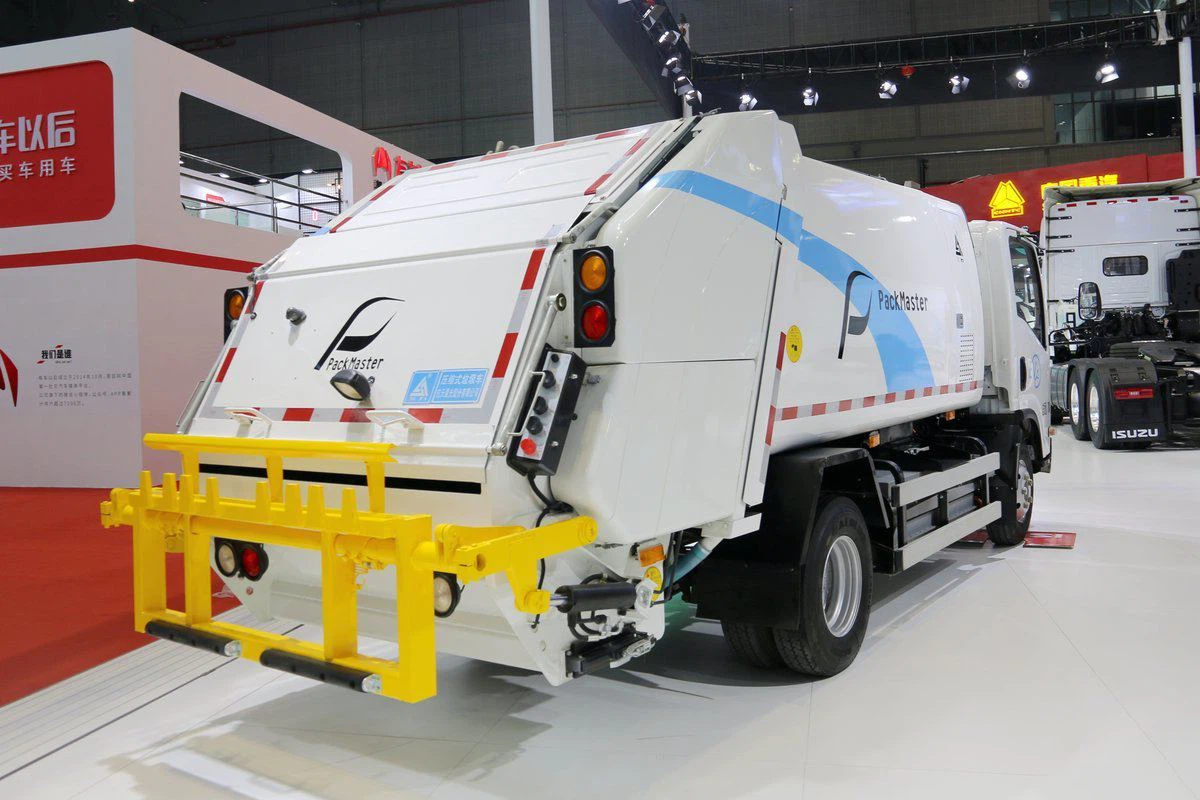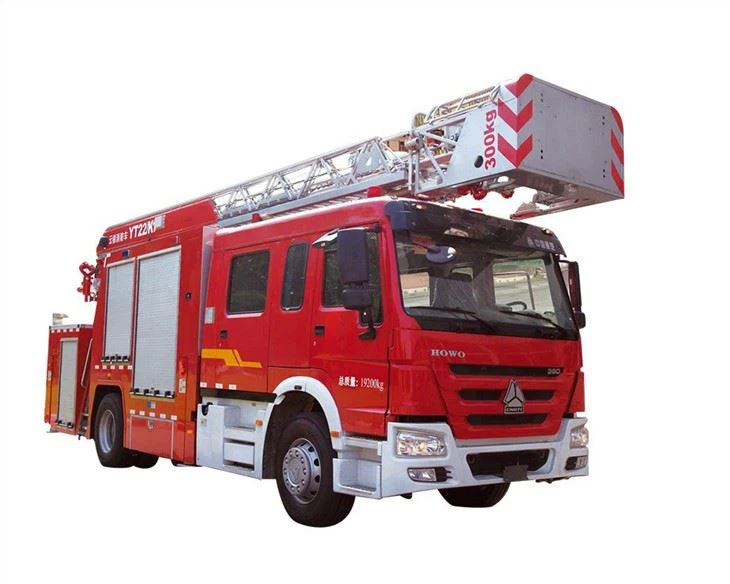Ultimate Guide to Garbage Trucks with Claw: Revolutionizing Waste Management

In recent years, garbage trucks have evolved significantly, and one of the most notable innovations in this field is the garbage truck with a claw. This type of vehicle has gained popularity due to its efficiency and reliability in waste collection. In this comprehensive guide, we will explore the various aspects of garbage trucks with claws, from their design and functionality to their advantages and applications. By the end, you will have a deeper understanding of how these vehicles are transforming waste management.
What is a Garbage Truck with Claw?
A garbage truck with claw, also known as a grapple truck, features an articulated arm equipped with a claw or grabber at the end. This mechanism allows waste collectors to pick up large and bulky items, such as furniture, appliances, and yard waste, with ease. The claw’s design enables it to grasp and lift heavy objects, making the waste collection process more efficient and safer for operators.
How Garbage Trucks with Claws Work
The Mechanism
The principal feature of a garbage truck with a claw is its grappling arm. This arm usually consists of hydraulic systems that allow for precision control in picking up and depositing waste. The operation of the claw involves several components:
- Hydraulic Pump: Converts mechanical energy into hydraulic energy to control the arm and claw.
- Control System: An operator’s interface that allows for the manipulation of the claw, often including joysticks or buttons.
- Articulated Arm: Provides a range of motion to the claw, allowing it to reach various angles and locations.
Operational Process
The operational process of a garbage truck with a claw typically includes the following steps:
- The truck arrives at the location where waste is to be collected.
- The operator uses the control system to maneuver the claw and pick up the waste item.
- The claw lifts the item and deposits it into the truck’s compactor or designated area.
- The truck leaves the location to continue its waste collection route.
Types of Garbage Trucks with Claws
There are various types of garbage trucks with claws, designed to meet different waste management needs. Below are some common types:
1. Residential Collection Trucks
These trucks are typically used for picking up bulky waste items from residential neighborhoods. Their claws are designed to handle large furniture and appliances that cannot fit into standard garbage bins.
2. Commercial Collection Trucks
Commercial collection trucks are equipped with heavier-duty claws to handle larger waste volumes found in commercial areas. They are effective for managing construction debris and large-scale waste disposal.
3. Yard Waste Collection Trucks
Equipped with specialized claws, yard waste collection trucks are designed to pick up leaves, branches, and other green waste from parks and residential areas, helping to keep the environment clean.

4. Recycling Collection Trucks
Some garbage trucks with claws are designed for recycling purposes, allowing for the efficient collection of recyclable materials without causing damage to the items.
Advantages of Garbage Trucks with Claw
Garbage trucks with claws offer several significant advantages, making them a valuable asset in waste management:
1. Increased Efficiency
The ability to pick up large items quickly minimizes the time spent on each collection route. This increased efficiency allows waste management companies to cover larger areas in less time.
2. Safety for Operators
With a claw-operated mechanism, operators can pick up heavy items without having to lift them manually, reducing the risk of injuries associated with heavy lifting.

3. Versatility
These trucks can collect a wide variety of waste materials, from bulky furniture to yard waste, making them highly versatile and adaptable to different waste management needs.
4. Environmental Impact
By effectively collecting and managing bulky waste, these trucks help keep neighborhoods cleaner and reduce incidents of illegally dumped materials.
Practical Examples and Tips for Using Garbage Trucks with Claws
Example 1: Community Bulk Waste Collection Events
Communities can organize bulk waste collection events where garbage trucks with claws are deployed to assist residents in disposing of unwanted items safely and efficiently. Creating awareness about these events can help ensure maximum participation.
Example 2: Construction Sites
Using garbage trucks with claws on construction sites can streamline the removal of debris. Construction managers should schedule regular pickups during and after construction to maintain a safe and clean environment.
Tips for Waste Management Companies
- Training: Ensure operators receive comprehensive training on using the claw mechanism for safe and effective operation.
- Regular Maintenance: Conduct routine inspections and maintenance of the hydraulic system and claw to prevent breakdowns.
- Clear Communication: Provide detailed information to the community about the types of waste collected and guidelines for preparation.
Environmental Considerations
Garbage trucks with claws contribute to sustainability efforts by promoting responsible waste disposal. However, it is essential to consider the environmental impact of these vehicles:
1. Fuel Consumption
Like all heavy machinery, garbage trucks consume fuel, which contributes to carbon emissions. It is vital for waste management companies to invest in environmentally friendly technologies or explore alternatives such as electric trucks.
2. Waste Diversion
Implementing strategies to enhance recycling efforts can reduce the amount of waste sent to landfills. Garbage trucks with claws can play an essential role in this process by effectively separating recyclable materials during collection.
Future of Garbage Trucks with Claws
The market for garbage trucks with claws is evolving, with advancements in technology paving the way for enhancements in efficiency and eco-friendliness. Key trends include:
1. Electric and Hybrid Models
With increasing environmental awareness, the development of electric and hybrid garbage trucks with claws is on the rise. These vehicles can offer lower emissions and noise levels.
2. Smart Technologies
Incorporating smart technologies such as GPS, route optimization software, and IoT connectivity can improve efficiency and provide real-time tracking of garbage collection operations.
Frequently Asked Questions (FAQ)
1. What types of waste can be collected by garbage trucks with claws?
Garbage trucks with claws can collect a variety of waste, including bulky items like furniture, appliances, yard waste, construction debris, and more.
2. Are garbage trucks with claws environmentally friendly?
While they contribute to environmental sustainability by efficiently collecting waste, their environmental impact depends on fuel consumption. Electric and hybrid models are considered more eco-friendly.
3. How do garbage trucks with claws improve safety for operators?

The use of hydraulic claws reduces the need for manual lifting of heavy items, significantly lowering the risk of injury for waste management workers.
4. Can garbage trucks with claws operate in residential areas?
Yes, garbage trucks with claws are often used in residential areas to collect bulky waste, making it easier for residents to dispose of large items.
5. How often are bulk waste collection events organized?
Bulk waste collection events typically occur to coincide with specific community needs, often scheduled annually or semi-annually, depending on local regulations.
6. What should I do if I have bulky items to dispose of?
Check with your local waste management authority for scheduled bulk waste collection events or services that allow residents to dispose of large items safely.
